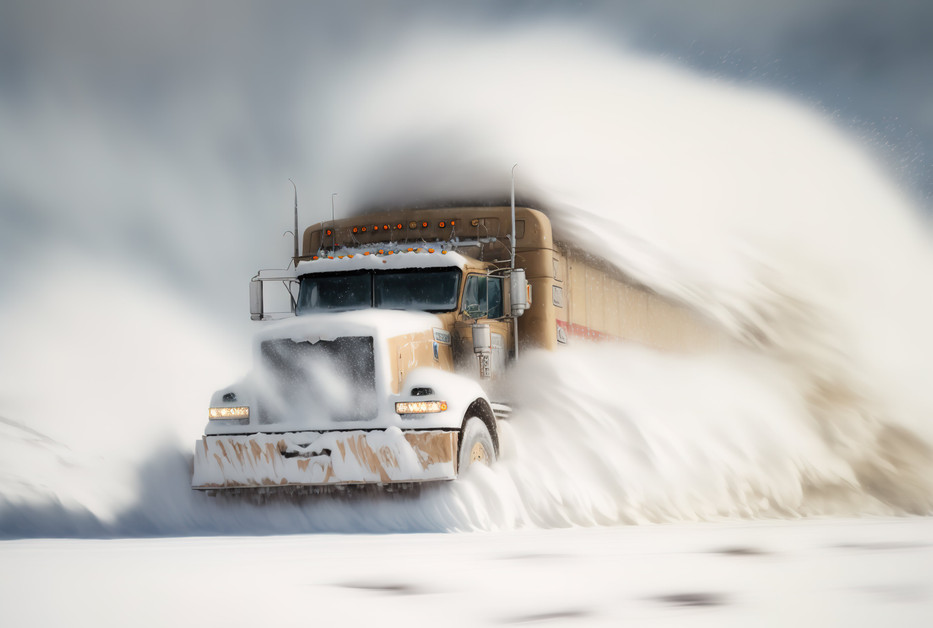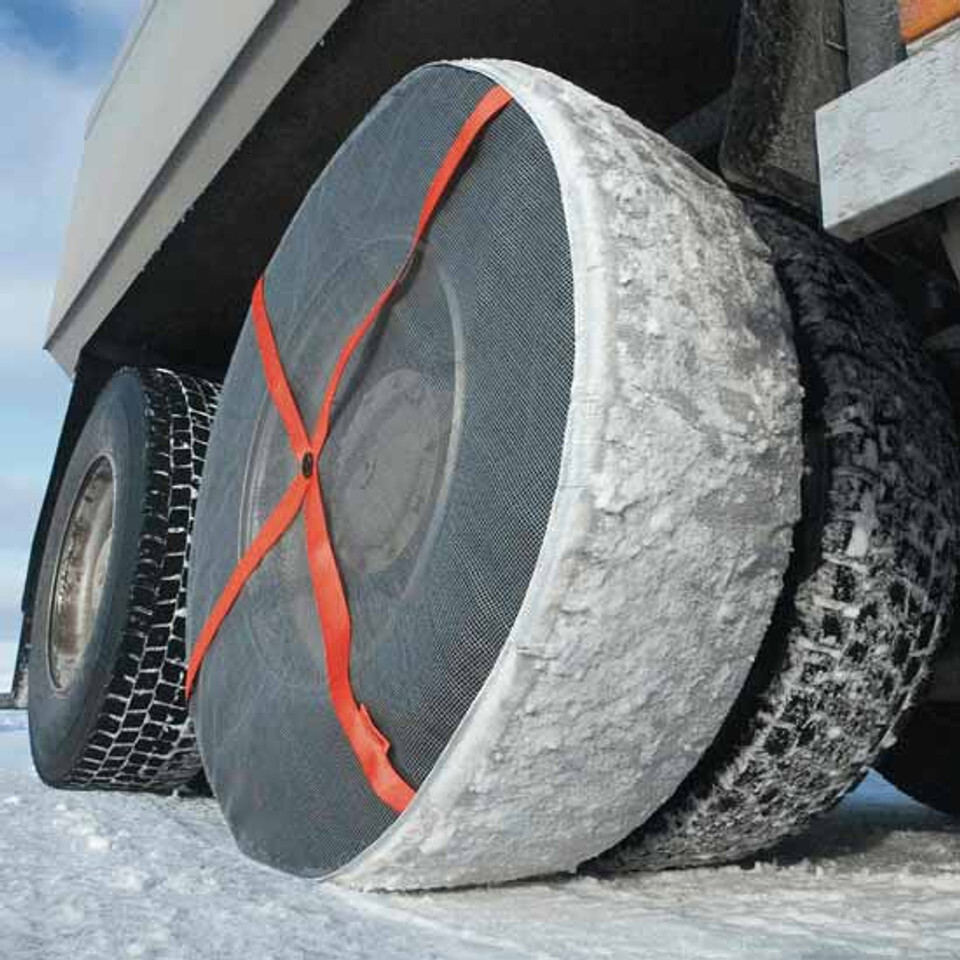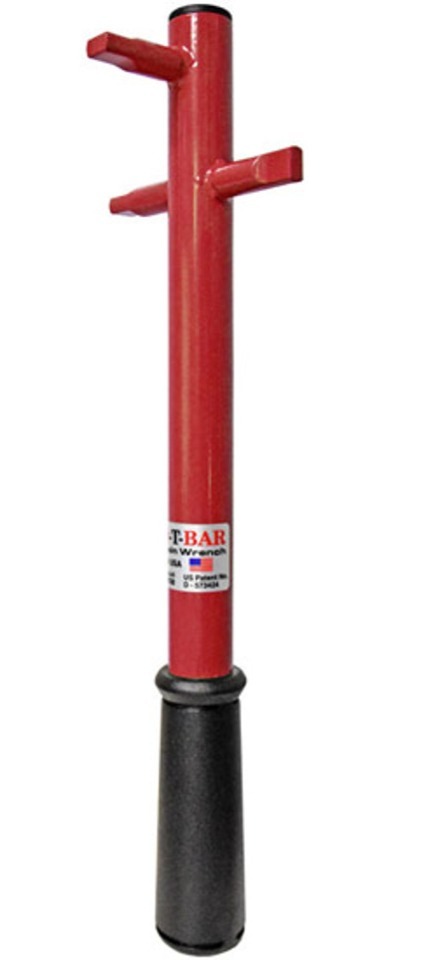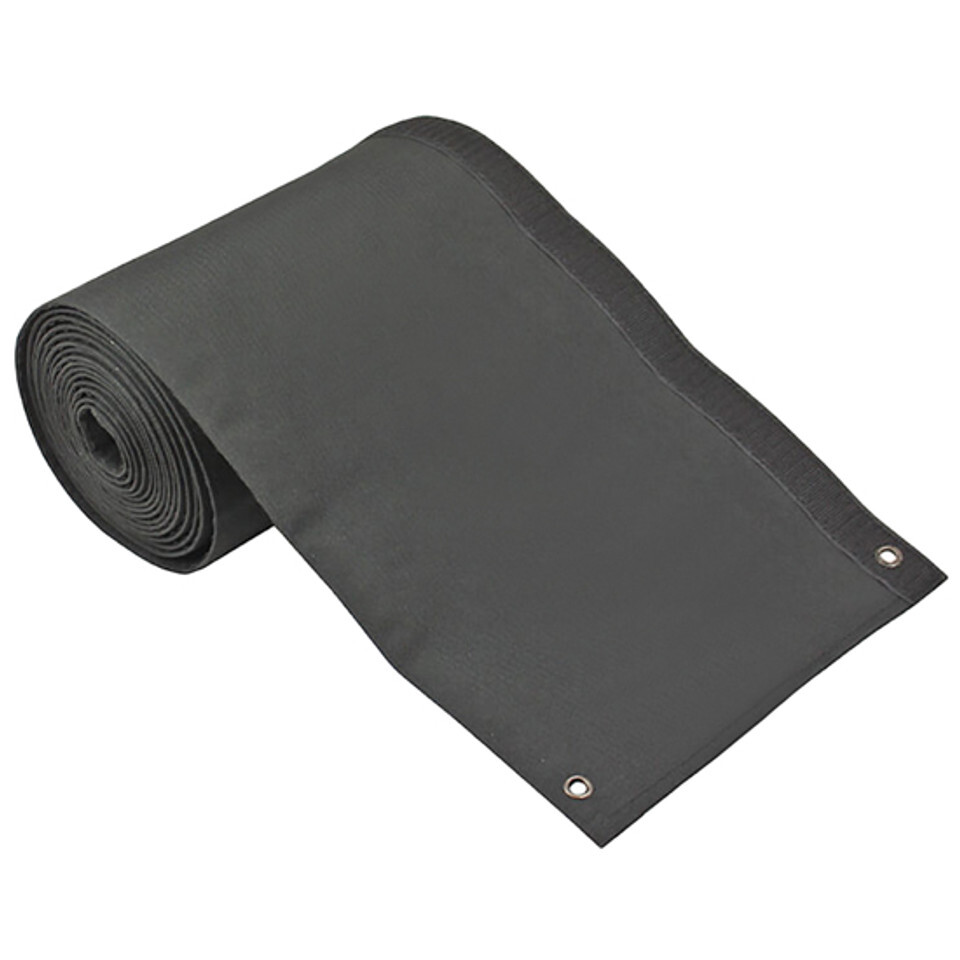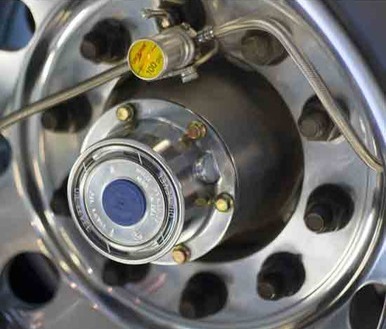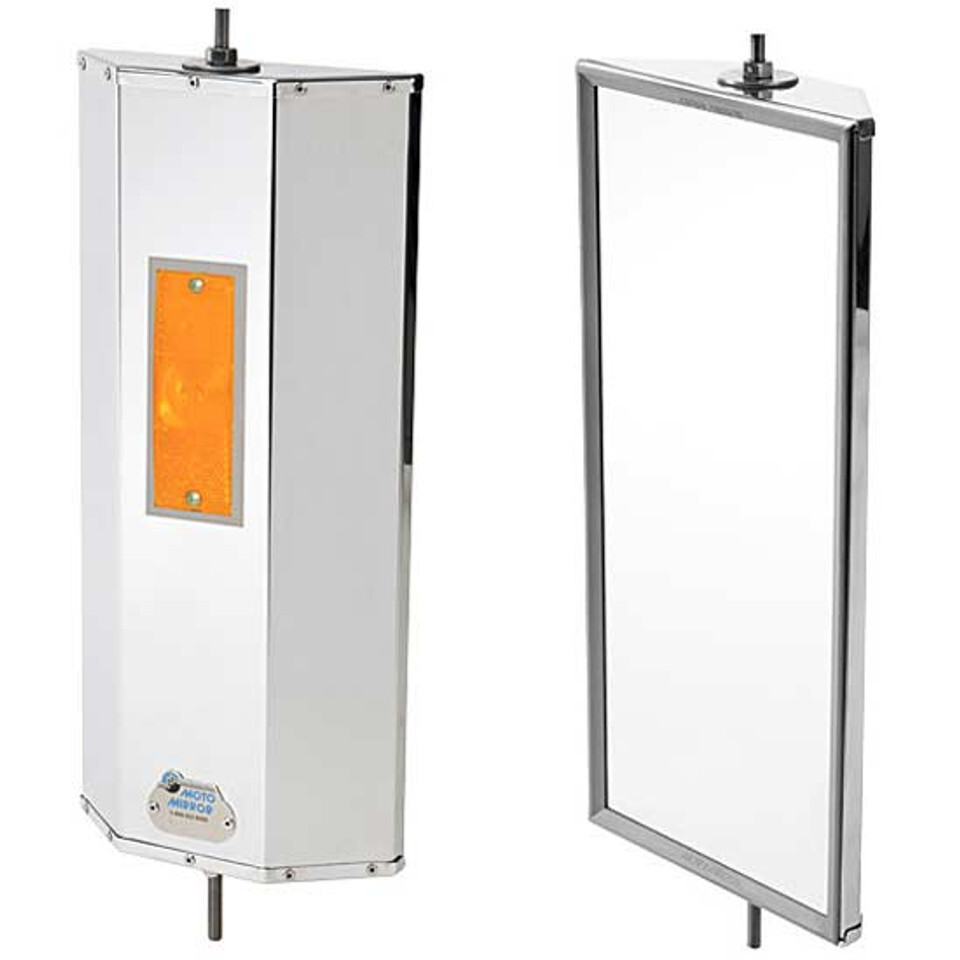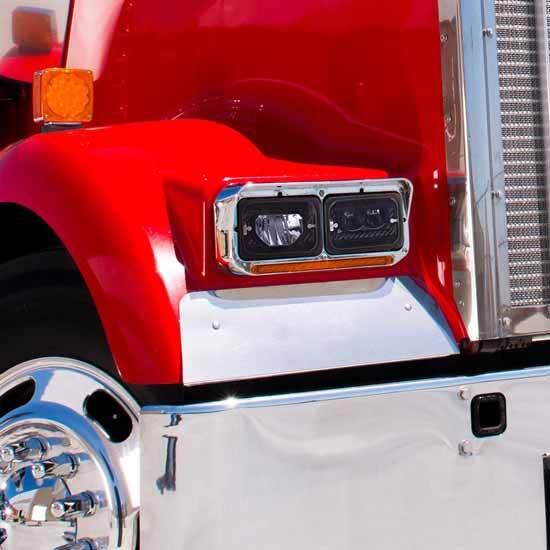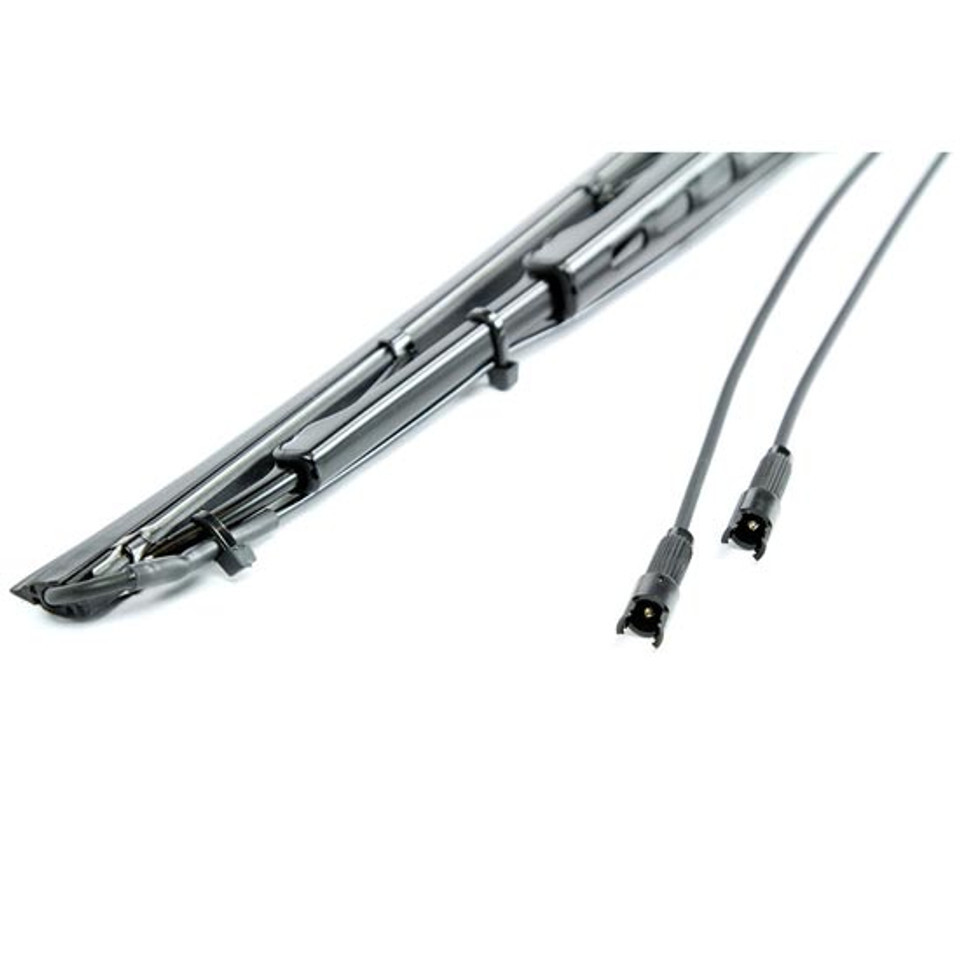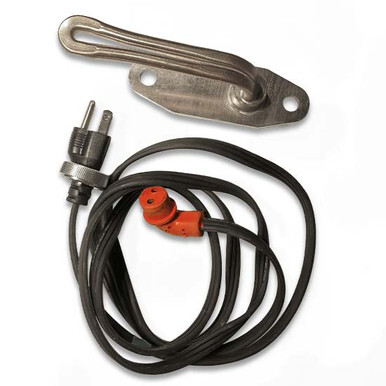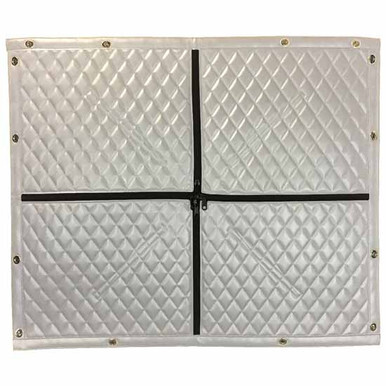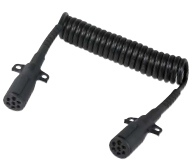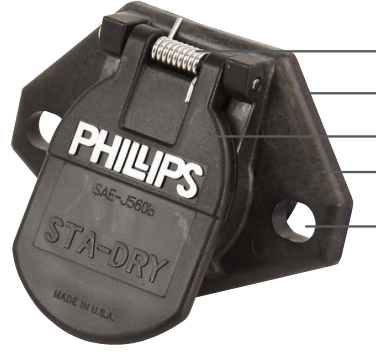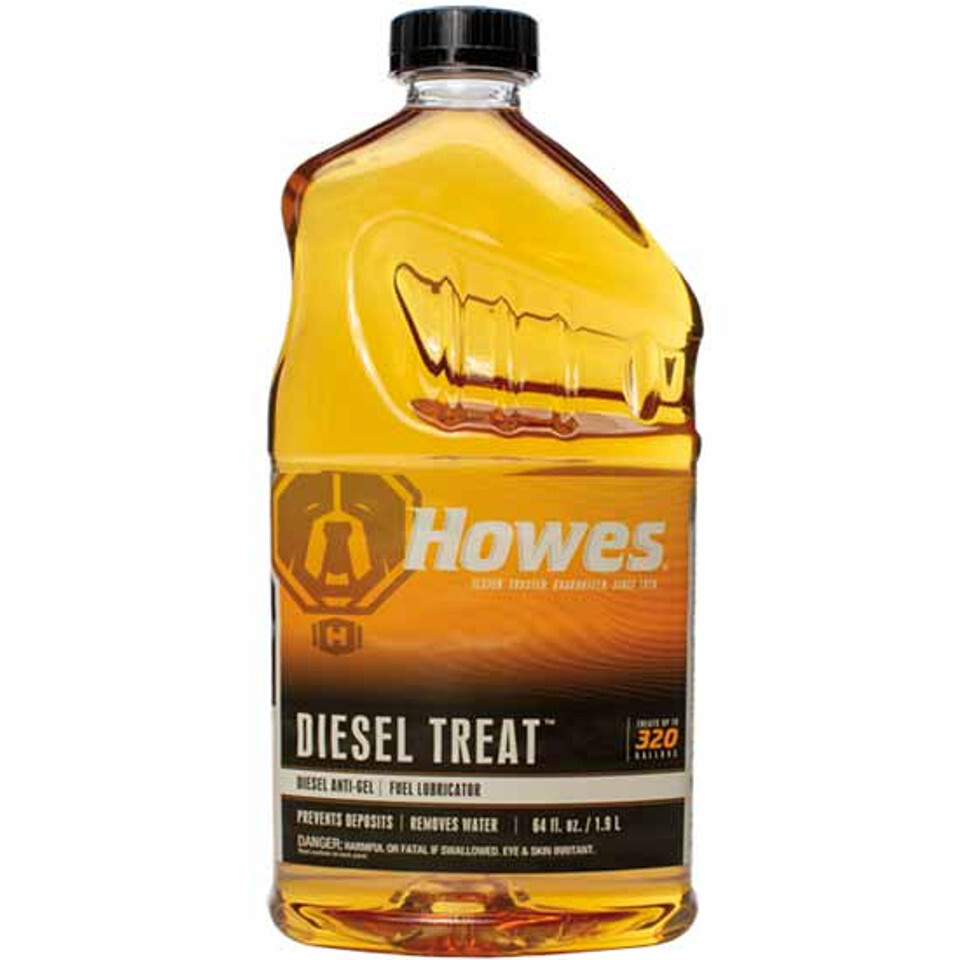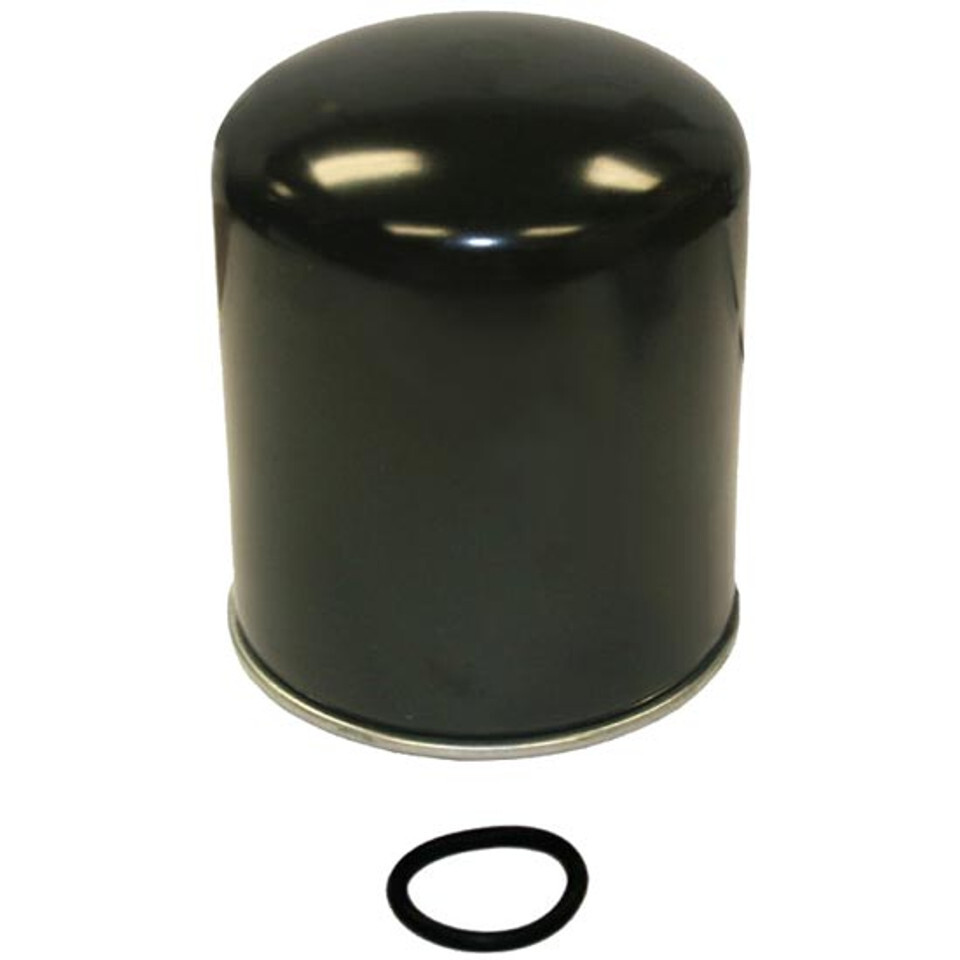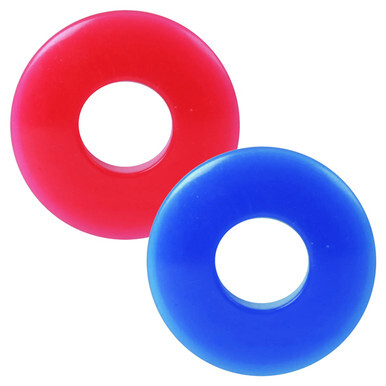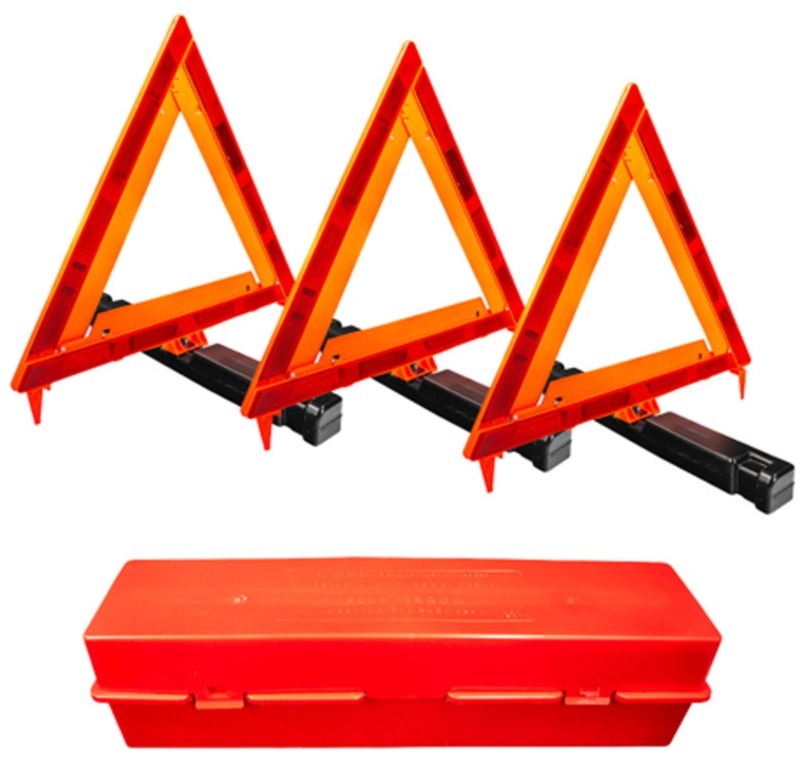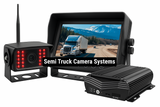How to Winterize a Semi Truck: The Complete Driver Checklist
Cold winter weather, freezing temperatures, snow-covered roads, and adverse weather conditions wreak havoc on semi truck engines and equipment, and can lead to costly repairs if damage occurs.
Don’t compromise safety on the road. Here are some tips on how to get your truck winter-ready.
How to Quickly Prep Your Semi Truck for Winter
THE BEST TIPS:
- Keep the Fuel Tank Full: if you're parked, do not keep a low fuel tank (it'll condensate and ice up).
- Use Anti-Gel: check the labels and get the concentration right to prevent your fuel from freezing.
- After Gel: if it's too late and your fuel is frozen, use one of these.
- Tires: check your tire pressure regularly.
- Windshield: check for chips or cracks and switch to cold temp blend washer fluid.
- Engine: switch to a winter-grade engine oil for easier cold starts and use the right antifreeze concentration (5/50 or 60/40).
- Fuel Filter & Water Separator: consider changing your fuel filter before winter starts
- Lights: visibility is important, so ensure the exterior lights aren’t dead.
- Battery: check each individual battery connections, inspect the wiring for damage, and confirm that the battery mount is secure.
- Air Dryer: drain the air dryer using a purge valve and check its functionality with a voltmeter.
- Gladhands: inspect the gladhands for corrosion.
- Exhaust System: inspect it thoroughly because winter cold can lead to cracks or leaks in the exhaust system.
Best Winter-Ready Truck Accessories for Your Big Rig
#1. Tire Chains
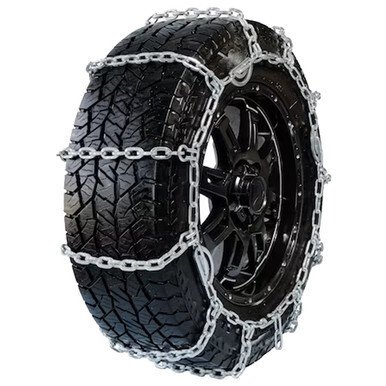
If you find yourself hauling loads through vast stretches of snow-covered highways in northern states like Minnesota or North Dakota, you'll be happy you bought these.
Tire chains can be stored in your cab rack or on a lockable, frame-mounted tire chain hanger.
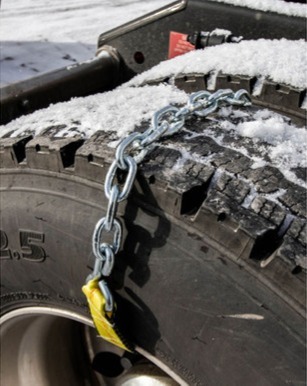
Get-Go tire chains are a great brand to consider adding to your rig.
A interesting alternative to tire chains is the Autosock Winter Traction cover.
It's a lightweight alternative that's machine washable and easy to install. It's quieter and has less vibration than traditional tire chains. Not only that, the material won't damage your wheel in any way.
Let's say it's too late for any of that.
You've already pulled to the side of the road and you're trying to install emergency snow tires on the spot. In that case, you'll be thankful to have a high quality tire chain wrench in your storage.
Sure, it's not a must-have item, but something to seriously consider throwing into your toolbox.
#2. Nylon Cable Wraps
Add nylon cable wrap over your gladhands. This prevents fraying and moisture damage to the inner lining from winter weather.
#3. Equalizer Valve
Tire pressure can shift dramatically in cold weather. So, keep an equalizer valve on hand to rectify this.
#4. Heated Mirrors
Moto Mirror offers top-of-the-line aftermarket mirror kits to fit any Class 8 semi.
#5. Heated Headlights
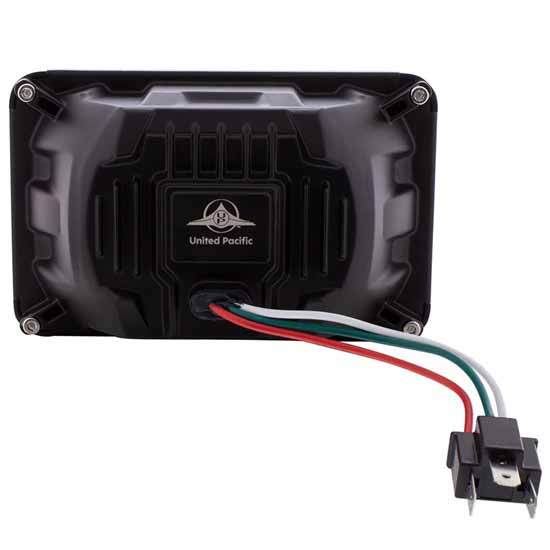
Alongside headlights, you can also install heated taillights.
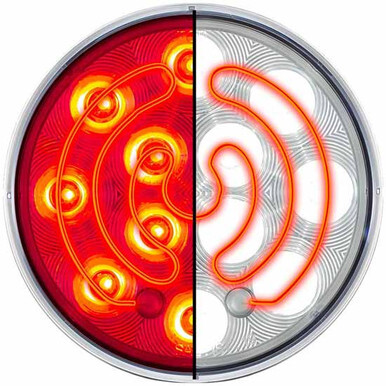
Even oval-shaped rear LED turn lights have a heated lens option incorporated into the design.
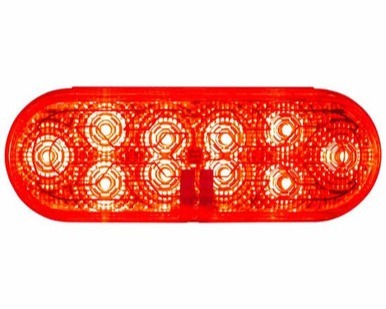
Some of the top brands for heated rear lights include:
#6. Winter Wiper Blades
These J-hook style wiper blades eminate a 230 F radiant heat that stretches throughout the silicone wiper blade and the metal frame it's attached to.
They're easy and quick to install. And they maintain flexibility under harsh winter conditions, lasting up to 3 times longer than normal windshield wipers.
#7. Engine Block Heater
#8. Winter Front
While many modern trucks come with in-build systems designed to do the job of a winter front.
Winter fronts remain a useful accessory for older semi truck models.
#9. Permacoil 7-Way Power Cable
This 7-way light-duty Permacoil is what powers the electrical system in your truck. This product effectively prevents moisture and corrosion build-up.
Phillips Industries also offers a STA-DRY socket locks out moisture and contaminents - unlike traditional electrical plugs and air plugs.
#10. Buy a Spare Radiator Cap
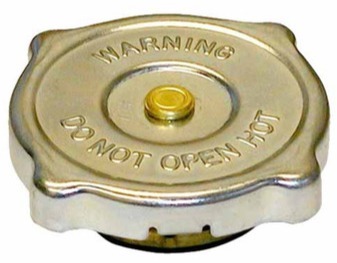
A damaged or worn seal can mean coolant loss, pressure loss that compromises the cooling system. Having a spare cap on hand is worth it.
BONUS: Insta-Chain Automatic Ice Chain
This is an interesting product. No, it's not a "must-have" truck accessory. And, no, it's not cheap.
Powered by the truck's secondary air tank by the press of a button, these 6-chain to 12-chain wheel strands help to clear away ice from the bottom of the truck.
It's namely used by municipalities that have vocational commercial trucks dedicated to driving through harsh winter weather.
The Quick Recap: Winter Prepping with the Right Products
- ≤ 32°F: switch washer fluid, regularly check tire pressure, drain water separator, verify lights/wipers.
- ≤ 20°F: start anti-gel fuel additives, inspect air dryer purge, test battery performance.
- ≤ 10°F: plug in your engine block heater, carry spare fuel filters, avoid cold soaks.
- ≤ -10°F: winterized fuel (#1/#2 blend), chain readiness, park out of wind.
Fuel System in Cold Weather — Stop Gelling, Protect Injection
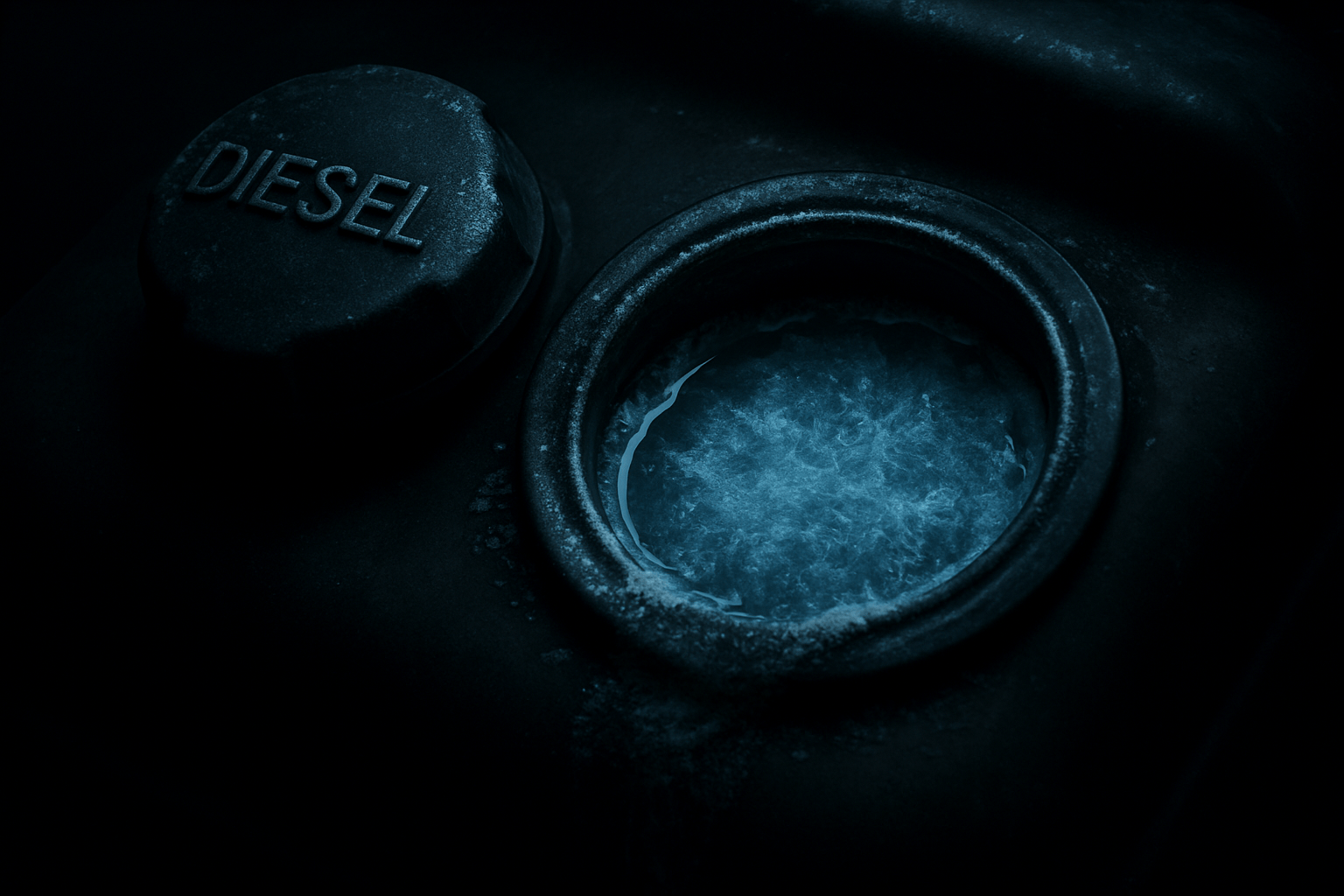
The number one thing you need to plan for is fuel gelling. So, be prepared. Carry anti-gel solution with you to avoid it from happening.
Fuel science: cloud point, CFPP, pour point (plain English)
The Cloud Point: the temp at which wax crystals form in the diesel fuel, making it appear cloudy.
CFPP (Cold Filter Plugging Point): lowest temp at which diesel fuel clogs the filter.
Pour Point: lowest temp at which diesel fuel flows through the hoses.
Using the Right Anti-Gel Diesel Fuel Treatment
Preventive anti-gel should be used BEFORE the fuel congeals.
Howes and Lucas Oil offer some great diesel treatment products.
An emergency de-geller should ONLY be used after the fuel has congealed, not beforehand.
DO NOT mix these in the same fill.
Avoid Condensation in Your Fuel Tank
Keep your tank at least half full to avoid condensation in the tank. The vacant space in the tank with low fuel levels allows for moisture to build up and mix with your fuel. Bad news.
Perform a daily water separator check and carry a few spare fuel filters in case of an emergency.
Use the Right Fuel Grade Blends & Cetane in Cold Climates
#1 blends are ideal for cold months (it has a higher cetane rating); use #2 blends for warmer months (has a lower cetane rating).
Tip: Keep a warm fuel tank (always over half full) during colder months.
Electrical Systems & Starting — Battery Life in Freezing Temps
In freezing temps, battery capacity can drop 30-50%.
Here are some steps to keep the electrical system running.
Load Test & CCA Targets
VISUAL: Replace leaking batteries and clean out green/white corrosion at the terminals; tighten the lugs.
RESTING VOLTAGE: (12V system) After 2-3 hours, batteries should read 12.6-12.8V.
CONDUCTANCE TEST: Test each battery individually and get an instant CCA estimate.
CARBON PILE LOAD TEST: Apply 1/2 the rated CCA for 15 seconds, voltage should read above 9.6V.
CHECK VOLTAGE DROP: Positive path (battery to starter) = less than 0.5V during crank; Ground path (starter to battery) = less than 0.2-0.3V.
Check your torque battery connections every month during the winter and keep surface areas dry. Any mosture buildup can create energy leakage paths.
Alternator Output & Parasitic Draw
Alternator & Charge System Test:
- With loads ON = over 13.5V
- Hot Idle (no loads): 13.8-14.6V across batteries
- AC ripple check: less than 0.5V AC.
Parasitic (key-off) draw:
- Acceptable draw: less than 50mA.
- Procedure: fully charge it, key off, close the doors, and let modules sleep 20-45 min.
- Place ammeter in series with negative cable.
- If the draw is high, pull fuses one at a time (or disocnnect added accessories) to isolate the circuit.
Exhaust Aftertreatment (DPF/DEF) — Winter Strategy
DEF freezes at 12F (-11C). Cold idling menas low exhaust gas temperatures, and therefore more soot. Plan your routes and driving habits carefully ahead of time. This way, the aftertreatment stays hot enough to self-clean (via the regen cycle).
Frozen DEF handling (no additives)
Symptoms: DEF level is OK, but system reports “DEF thaw in progress,” low DEF pressure code, or temporary SCR/NOx efficiency warnings after a cold soak.
First off, don't add chemicals. Let the truck thaw the DEF via the tank and line heaters. Check the easy stuff, like the DEF cap and tank vent.
Cold-weather regen strategy
Goal: Keep the diesel particulate filter hot enough, long enough, to oxidize soot. Idling on a cold lot drops EGTs and loads soot.
The daily operating rules include:
- Reduce idle time.
- Add one high-load segment to each duty cycle.
- Do not interrupt the regen process.
Air System & Brake System Parts to Help Keep Moisture Out
Tractor Air Dryer & Purge Assembly
The goal is to keep water out of the system so it doesn't freeze in the valves and lines.
Here's what you might need.
Air Dryer Desiccant Cartridge
Get a premium aftermarket cartridge to match your dryer model. Replace these annually before winter.
Signs of failure: moist spit at wet tank drain, sluggish air build, and frequent frozen valves.
In winter, the goal is to drain out excess moisture/water before it freezes and causes issues.
Gladhands & Tractor-Trailer Connections (Winter Upgrades)
Getting the right parts can stop the moisture at the coupling, before it enters.
Polyurethane Gladhand Seals
Unlike rubber, polyurethane will stay flexible in freezing temperatures. Replace them when you see checking or flattening.
Pack an Emergency Kit for Winter Truck Driving
Any driver hauling payloads through winter weather needs an emergency kit. It's a given.
Always pack one with you as it has essential safety accessories for you and your truck.
A kit should come with:
- Work gloves
- Warning triangles
- First aid kit
- Tire pressure guage
- Tire thread guage
- Zip ties
- Emergency blanket
- Wheel chocks
- Hand warmers
- Warning flag
You can also throw in accessories like:
- Spare bulbs/fuses
- Tow/recovery straps
- Triangles
- Traction aids
Winter Accessories & Parts at 4 State Trucks
At 4 State Trucks, we stock in-demand parts to help personalize and upgrade your rig all year long.
You can easily shop for the top accessories and components to help winterize your semi truck, inculding:
- Anti-gel & emergency de-geller
- Winter mats
- Heated headlights
- Air dryer cartridges/purge valves
If you need assistance with finding the right part or fitment, call a product expert. And shop with greater convenience using our mobile app.
Recent Posts
-
Custom Underglow Light Setups on Semi Trucks
If you're looking for a way to dramatically enhance the look and presence of your semi truck at nigh …28th Nov 2025 -
Common Myths and Mistakes When Buying Aftermarket Semi Truck Parts (Ultimate Guide)
Cost, convenience, and make/model fitment are the top priorities when it comes to buying aftermarket …18th Nov 2025 -
Haul of Fame: Tony's Custom Retro W900 Kenworth
Tony Huttenstine is a seasoned owner-operator. Over the years, he has poured enormous time, money, a …14th Nov 2025 -
The 13 Best Christmas Gift Ideas for Truckers
Some of the best gifts for truck drivers are accessories that help make their job easier. Truckers s …11th Nov 2025 -
Best Semi Truck Camera Systems (Buyer's Guide)
Backup cameras can be a downright lifesaving accessory for truck drivers. But with countless commerc …7th Nov 2025 -
The 85-Year History of Peterbilt Trucks (Quickly Summarized)
Peterbilt: A Legendary Name in American Trucking A fast, engaging history—from WWII logging ingen …31st Oct 2025 -
The Best Steering Wheel Spinner Knobs for 2025
It's a small, affordable accessory that drivers love. Yup. We're talking about semi truck spinner kn …24th Oct 2025 -
Top 10 Semi Truck Winter Accessories for Heavy-Duty Drivers
Winter truck driving can be downright trecherous to work in, especially when you don't have the righ …21st Oct 2025 -
Haul of Fame: The Murder Pete Truck
They call it the Murder Pete. Blacked-out, rugged, and raw, it’s a notorious big rig known for its “ …17th Oct 2025


